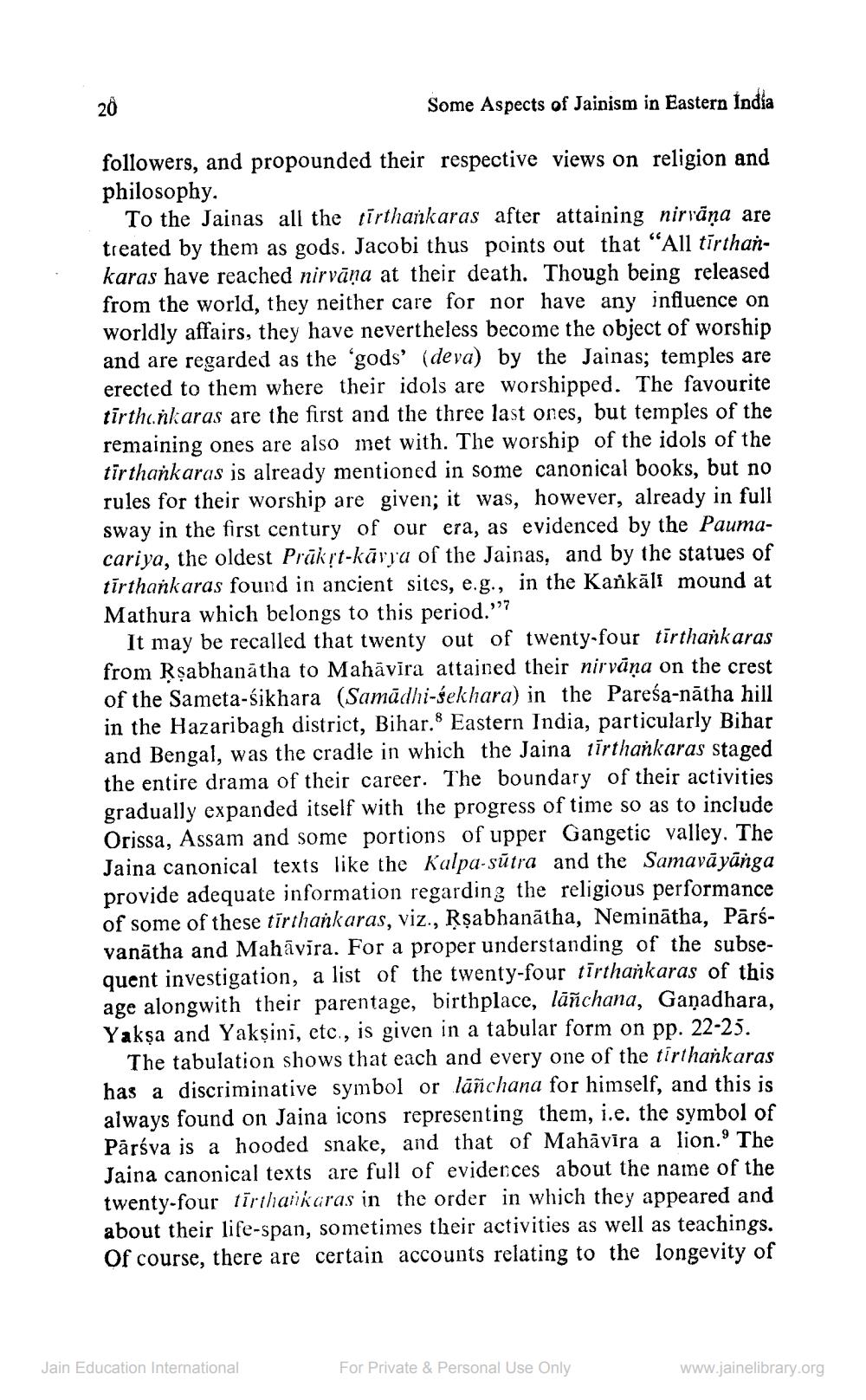________________
Some Aspects of Jainism in Eastern India
followers, and propounded their respective views on religion and philosophy.
To the Jainas all the tirthankaras after attaining nirrāņa are treated by them as gods. Jacobi thus points out that “All tirthankaras have reached nirvāņa at their death. Though being released from the world, they neither care for nor have any influence on worldly affairs, they have nevertheless become the object of worship and are regarded as the 'gods' (deva) by the Jainas; temples are erected to them where their idols are worshipped. The favourite tirthinkaras are the first and the three last ones, but temples of the remaining ones are also met with. The worship of the idols of the tīrthankaras is already mentioned in some canonical books, but no rules for their worship are given; it was, however, already in full sway in the first century of our era, as evidenced by the Paumacariya, the oldest Prākļt-kāvju of the Jainas, and by the statues of tīrthankaras found in ancient sites, e.g., in the Kaňkāli mound at Mathura which belongs to this period."
It may be recalled that twenty out of twenty-four tirthankaras from Rsabhanātha to Mahavira attained their nirvana on the crest of the Sameta-śikhara (Samādhi-sekhara) in the Pareśa-nātha hill in the Hazaribagh district, Bihar.' Eastern India, particularly Bihar and Bengal, was the cradle in which the Jaina tīrthařkaras staged the entire drama of their career. The boundary of their activities gradually expanded itself with the progress of time so as to include Orissa, Assam and some portions of upper Gangetic valley. The Jaina canonical texts like the Kalpa-sūtra and the Samavāyānga provide adequate information regarding the religious performance of some of these tirthankaras, viz., Rşabhanātha, Neminātha, Pārsvanātha and Mahāvīra. For a proper understanding of the subsequent investigation, a list of the twenty-four tirtharkaras of this age alongwith their parentage, birthplace, lāñchana, Ganadhara, Yakşa and Yakşini, etc., is given in a tabular form on pp. 22-25.
The tabulation shows that each and every one of the tirthankaras has a discriminative symbol or lāñchana for himself, and this is always found on Jaina icons representing them, i.e. the symbol of Pārsva is a hooded snake, and that of Mahāvīra a lion. The Jaina canonical texts are full of eviderces about the name of the twenty-four tiriharikaras in the order in which they appeared and about their life-span, sometimes their activities as well as teachings. Of course, there are certain accounts relating to the longevity of
Jain Education International
For Private & Personal Use Only
www.jainelibrary.org




